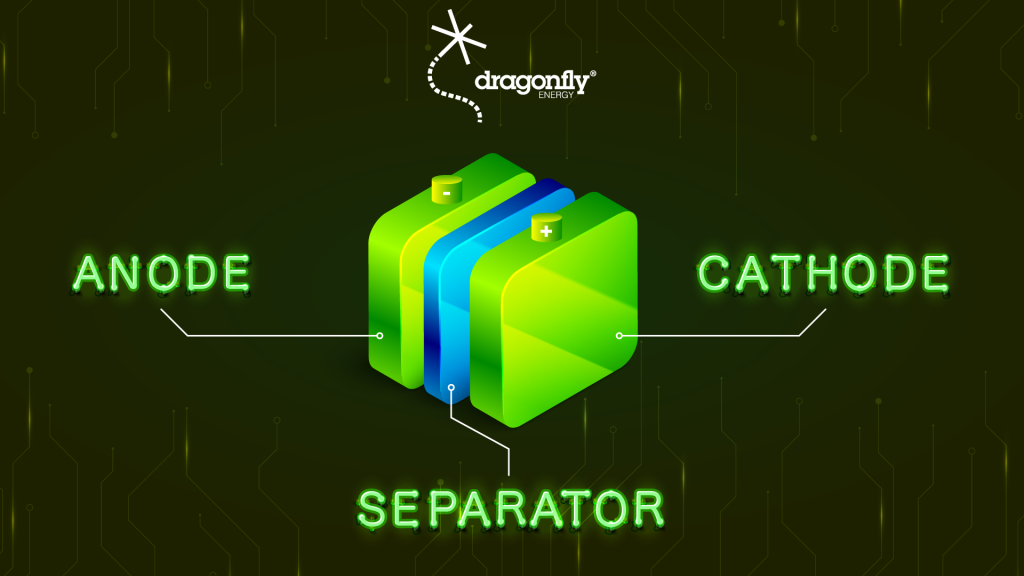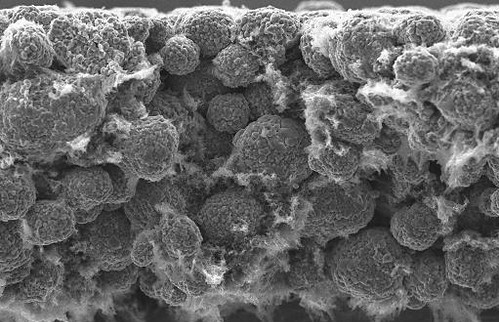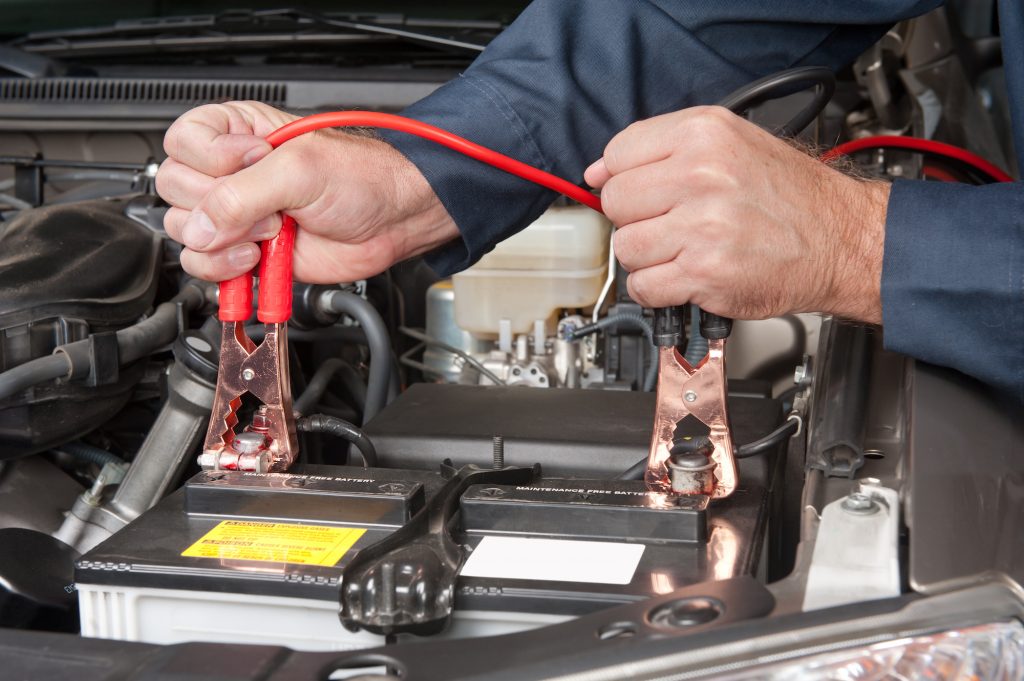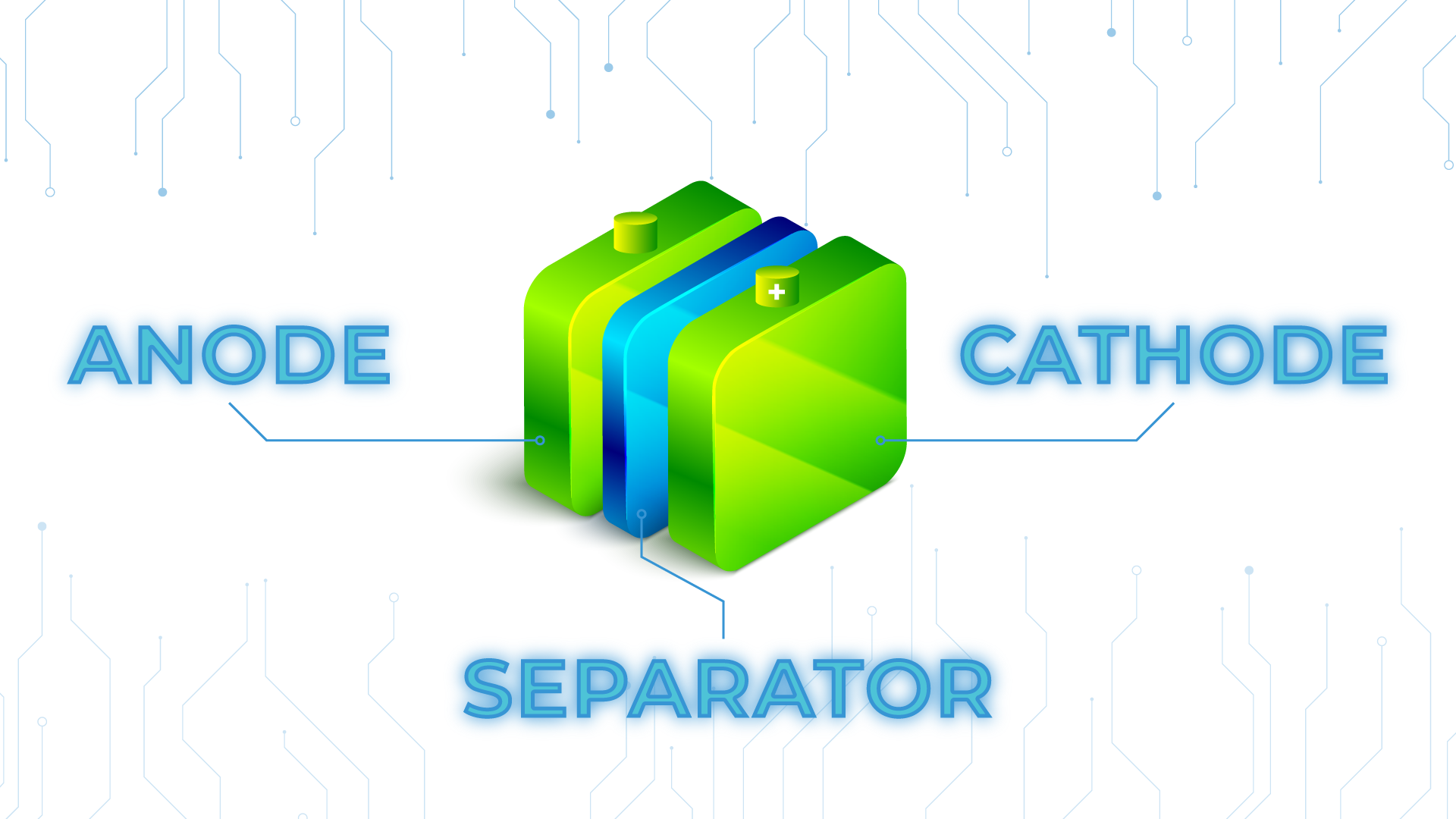Within a battery, there are four key components: an anode, a cathode, a separator, and an electrolyte. The electrolyte facilitates the transfer of ions, electrically charged particles, through the separator. Ions typically pass between the electrodes, otherwise known as the anode and the cathode. But what exactly is the difference between an anode and a cathode?

Anode vs. Cathode in Batteries
Lithium-ion batteries are made up of electrochemical cells, meaning that they can produce electricity through a spontaneous reaction. Unlike electrolytic cells that require an external power source to drive a non-spontaneous reaction, batteries create electricity through an electrochemical reaction. The anode and cathode are key pieces of the battery needed to create electricity.
What is an Anode?
An anode is a negative electrode (or negative terminal) and one of the essential parts of a battery. The anode is usually made of a metal that oxidizes and sends electrons to the cathode (the positive electrode). This electrochemical reaction produces electrons (i.e., electricity).

How Does an Anode Work?
An anode is an oxidizing metal, such as zinc or lithium, which means it loses electrons, making it negatively charged. It resides in an electrolyte solvent and slowly erodes as electrons move along a conductor to the cathode.
The conductor (whether a metal wire or tube) is how we access the electricity the anode makes and, ultimately, how a battery powers electronic devices. Once the anode completely erodes, the battery dies (or loses charge).
Common Anode Materials
Household (alkaline) batteries typically have a zinc anode, while lithium-ion batteries usually have a graphite anode. Other metals, including lithium and platinum, are also used as anodes in various battery chemistries. A suitable anode should be an efficient reducing agent, have good conductivity and stability, and have a high coulombic output (the electrical energy output).
Cathode
Like an anode, a cathode is an electrode in a battery. However, a cathode is a positive electrode (or positive terminal) because it gains electrons, making it positively charged. Therefore, anodes oxidize (lose electrons) while cathodes reduce (gain electrons).

How Does a Cathode Work?
Essentially, a cathode is there to receive electrons from the anode. The anode and cathode are submerged in an electrolyte solution, and electricity travels through the conductor from the negative to the positive parts of your battery. This, in a nutshell, is how a battery generates electricity.
Common Cathode Materials
A cathode can be any material that is an efficient oxidizing agent and stable when in contact with an electrolyte. Metallic oxides, such as copper oxide, lithium oxide, and graphic oxide, make excellent cathode materials because they also have a helpful working voltage.
How Do You Tell an Anode and Cathode Apart?
It’s very simple. Most RV, car, and household batteries have a plus (+) and minus (-) sign on each end. Because the anode is the negative electrode (and thus loses electrons), the minus sign refers to the anode. On the other hand, the plus sign refers to the cathode because it’s the positive electrode (and thus gains electrons).
Why It’s Important to Know the Difference Between a Battery’s Anode vs Cathode
Understanding the difference between the anode vs. cathode is essential because it allows you to comprehend precisely how your batteries work. Whether you’re doing your own solar setup or replacing your batteries, you’ll feel confident in your abilities to install your device’s powerhouse properly.
It’s also helpful when you’re jump-starting a car. Do you ever draw a blank trying to figure out where to attach the booster cable clamps? Now you know–one goes on the negative end (the anode), and the other goes on the positive end (the cathode).

Beyond Batteries: Anodes vs. Cathodes
Anodes and cathodes play a role in other places besides batteries. For example, ships have “sacrificial anodes” that protect the cathode, which is the parent material you need to protect from corrosion.
You’ll also find anodes in household utilities. Water heaters have sacrificial anode rods that extend the water heater’s life. Essentially, the anode rod attracts minerals in the water and erodes the anode instead of the tank. Hence, the name “sacrificial.”
Anodes can also help protect fluid tanks and pipes from corrosion–always to protect the cathode (i.e., the critical material manufacturers want to preserve).


